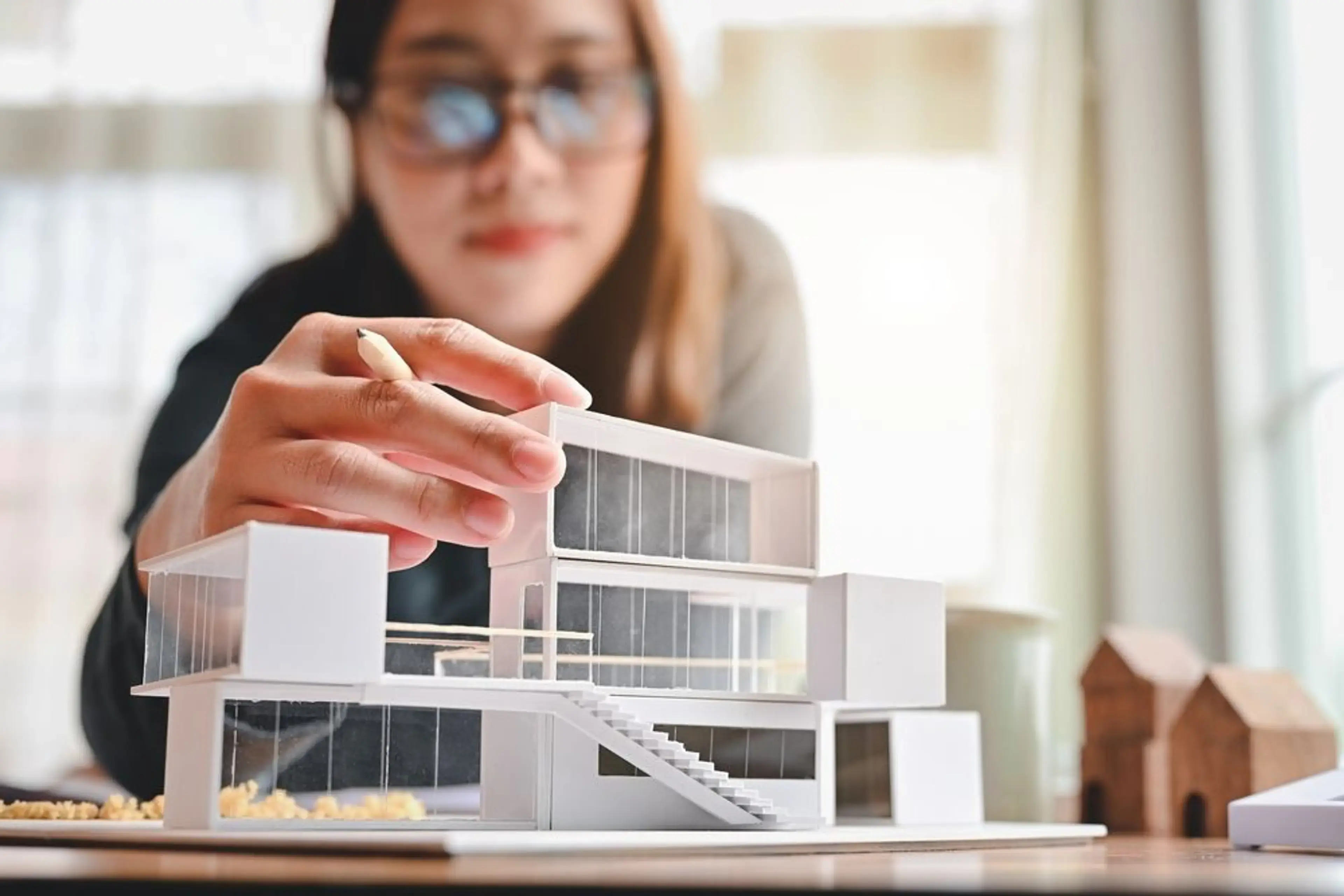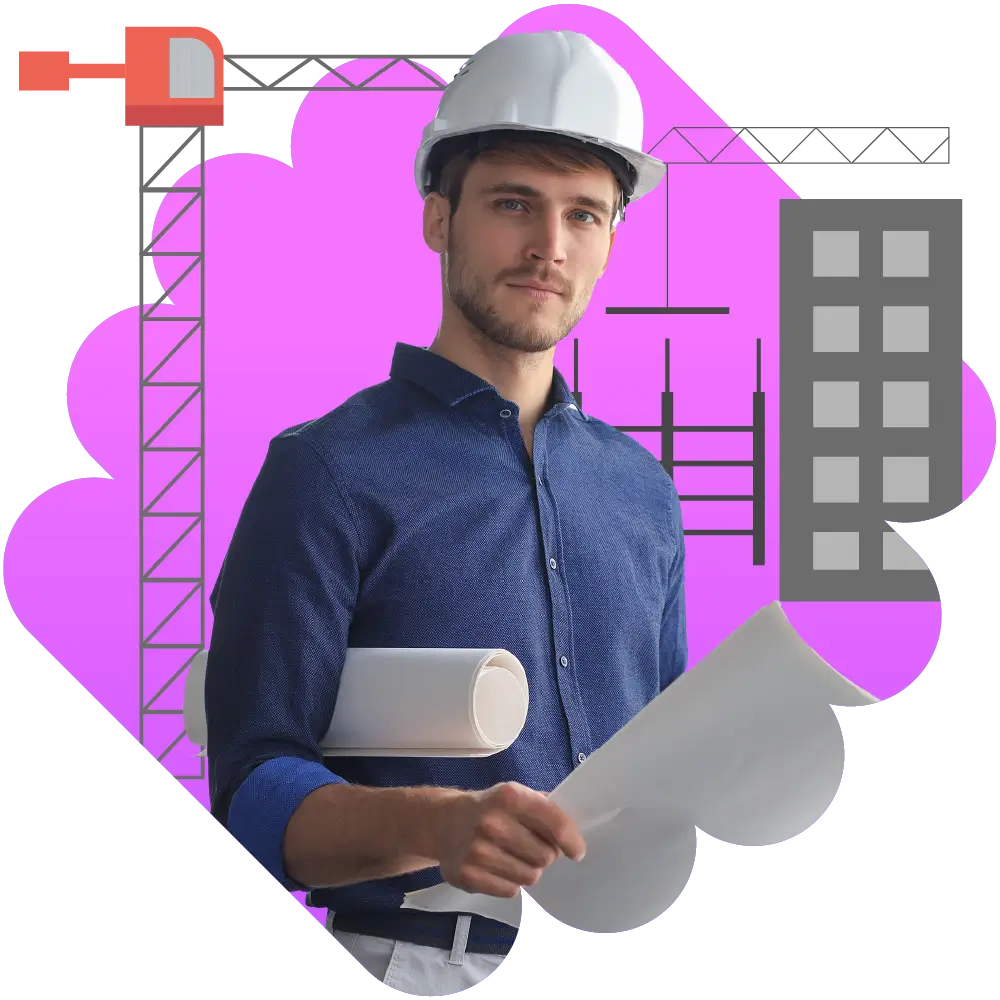Architect Insights on Harmonizing Form and Function
Architect Insights on Harmonizing Form and Function
Blog Article
Comprehending the Diverse Profession Paths Available for Aspiring Architect
As an aspiring Architect, you have a world of career paths awaiting you. Each path offers special difficulties and opportunities to use your imagination and technical expertise. Whether you're drawn to conventional style or the nuances of sustainable design, there's a particular niche that aligns with your interests. Understanding these diverse options can shape your expert trip, however which direction will you choose to discover first?
Typical Design: Creating Structures and Frameworks
Conventional design focuses on creating structures and structures that mix capability with aesthetic charm. As you discover this field, you'll appreciate the intricate balance in between type and function. You'll learn to draw inspiration from historic styles, integrating components like balance, materials, and workmanship. Your layouts can show cultural heritage, showcasing neighborhood practices while meeting modern needs.
You'll create skills in preparing, model-making, and site analysis, permitting you to envision and communicate your ideas successfully. Involving with customers, you'll need to comprehend their vision and translate it right into practical designs.
Furthermore, developing codes and sustainability methods are crucial in your work, guaranteeing your structures are environmentally friendly and secure. As you grow in your profession, you'll discover chances in domestic, business, and even remediation tasks, each offering distinct challenges. Accepting conventional architecture leads the way for a fulfilling job that admires the past while forming the future.
Urban Planning: Forming Areas and Public Spaces
As an aspiring Architect, you can play a vital role as a metropolitan organizer, changing exactly how neighborhoods engage and work. By using neighborhood engagement techniques, you'll ensure that homeowners have a voice fit their environment. And also, integrating lasting layout principles will certainly aid create areas that not only meet today's requirements but additionally secure the future.
Function of Urban Planners
While numerous might assume of engineers as the single visionaries behind structures, city planners play a necessary role fit the wider landscape of communities and public rooms. They analyze land usage, zoning laws, and area requires to produce sustainable environments that enhance top quality of life. By teaming up with different stakeholders, you'll assist create parks, transport systems, and domestic areas that promote social interaction and accessibility. Urban organizers additionally concentrate on ecological factors to consider, making sure that advancements integrate environment-friendly spaces and assistance biodiversity. Your knowledge in spatial style and community characteristics permits you to envision future growth while maintaining social heritage. In this crucial role, you'll directly affect exactly how individuals experience their environments, making every task an opportunity for positive modification.
Area Involvement Approaches
Reliable neighborhood engagement techniques are important for urban planners to ensure that the voices of homeowners are listened to and valued in the preparation procedure. To promote meaningful dialogue, you must prioritize open discussion forums and workshops where area members can express their ideas and issues. Usage studies and social media sites to reach a broader target market, making certain diverse point of views are included. Teaming up with local companies can improve trust and assist in much deeper links. It's important to offer clear info concerning suggested jobs and decision-making procedures, enabling residents to feel informed and empowered. By proactively including and listening feedback, you'll produce spaces that mirror the neighborhood's needs, ultimately causing more sustainable and successful city environments. Accept transparency and constant dialogue for enduring influence.
Lasting Layout Concepts
When creating city spaces, integrating sustainable layout principles is essential for developing settings that thrive both ecologically and socially. You need to start by concentrating on power performance, using materials that minimize waste and advertise recycling. Take into consideration integrating environment-friendly spaces, like yards and parks, to improve biodiversity and enhance air high quality. Advertising walkability and public transportation can minimize reliance on autos, fostering a much healthier area.
Creating with water preservation in mind is also vital-- consider rain gardens and absorptive surface areas to handle stormwater. Entailing area participants during the preparation process guarantees that the areas you produce fulfill their needs and motivate social interaction. By embracing these concepts, you'll add to dynamic, lasting metropolitan landscapes that profit everybody.

Landscape Architecture: Developing Sustainable Exterior Environments
As you discover landscape architecture, you'll find essential style concepts that produce useful and lovely outside rooms. Sustainable practices play an essential function in making certain these atmospheres flourish while reducing environmental effect. Plus, you'll discover a variety of occupation chances that permit you to make a genuine distinction in exactly how individuals engage with nature.
Layout Principles in Landscape
Understanding layout concepts in landscape architecture is necessary for developing lasting outside settings that integrate with nature. You'll need to contemplate aspects like proportion, balance, and range to ensure your designs really feel cohesive and welcoming. In addition, pay interest to seasonal adjustments, creating with products that enhance the surroundings year-round.
Lasting Practices Introduction
Lasting techniques in landscape design not just concentrate on aesthetic appeals however additionally focus on environmental wellness and resource preservation. By incorporating indigenous plants, you enhance biodiversity and reduce the need for chemical plant foods and pesticides. Implementing reliable irrigation systems helps conserve water and minimizes runoff, securing close-by environments. You can create rooms that advertise dirt health and wellness, such as practicing Find Out More and making use of natural materials permaculture concepts. Furthermore, integrating eco-friendly framework, like rain yards and porous pavements, aids in stormwater administration and decreases urban warmth. You contribute to a much healthier world and supply rooms that foster neighborhood link when you create exterior settings with sustainability in mind. Eventually, these techniques assure your layouts profit both people and the environment for many years ahead.
Job Opportunities Expedition
With a strong foundation in sustainable methods, landscape design uses a variety of profession paths that enable you to make a purposeful effect on the environment. You might function as a landscape designer, producing visually pleasing and useful outside rooms, or specialize in eco-friendly reconstruction, assisting to restore broken communities. Urban coordinators usually work together with landscape engineers to produce green rooms in urban setups, boosting city livability. If you're passionate concerning education and learning, take into consideration coming to be a landscape style teacher, inspiring future generations. In addition, you may deal with nonprofits concentrated on ecological sustainability or participate in research study to innovate new methods. Each path not just forms beautiful environments however additionally cultivates a much healthier earth for future generations.
Sustainable Style: Concentrating On Eco-Friendly Practices
As you explore your profession in style, welcoming environment-friendly practices can establish you apart in an affordable field. Lasting style concentrates on producing buildings that reduce ecological influence while improving owner wellness. By integrating renewable products, energy-efficient systems, and lasting structure techniques, you'll add to a greener future.
Start by acquiring knowledge of green qualifications like LEED or BREEAM, which can strengthen your credentials. Take into consideration exactly how all-natural light, air flow, and thermal performance can maximize style. Team up with designers and ecological specialists to introduce services that minimize waste and save sources.
Don't forget the relevance of neighborhood participation-- appealing neighborhood stakeholders can influence styles that harmonize with the setting. As customers significantly prioritize sustainability, your knowledge in environment-friendly methods will certainly not just draw in jobs however also meet your enthusiasm for responsible style. Welcome this critical facet of the career, and enjoy your job grow.
Historical Preservation: Securing and Recovering Cultural Heritage
While you commence on your architectural journey, consider the essential role of historical preservation in maintaining our social heritage. This field concentrates on the defense and repair of substantial buildings, websites, and structures that tell the stories of our past. By participating in historical preservation, you'll aid protect the building tradition that shapes neighborhood identification.
As a historical preservation Architect, you'll examine historical significance and analyze the condition of structures. You'll function very closely with chroniclers and preservationists to guarantee genuine restoration techniques are utilized. This profession course enables you to mix creativity with research, allowing you to create services that appreciate initial products and craftsmanship.
Your work not only contributes to sustainability by reusing existing structures but likewise promotes a feeling of satisfaction within areas. Accepting this course will certainly aid you come to be a guardian of history, maintaining the stories and looks that enrich our lives.
Inside Style: Enhancing Indoor Spaces
Historic conservation and interior style both share a dedication to boosting the built setting, yet they concentrate on different aspects. While historic conservation emphasizes maintaining a framework's historic and cultural value, interior design zeroes in on optimizing interior areas for capability and aesthetics.
As an check my source ambitious Architect, you'll discover that interior design enables you to mix creative thinking with technological skills. You'll make rooms that not only look great however also promote convenience and effectiveness. This field involves recognizing how light, color, and materials engage within an area, influencing state of mind and functionality.
You'll service various projects, from domestic homes to business offices, ensuring that each environment meets the demands of its residents. By prioritizing user experience, you can transform insides into useful and inspiring spaces, making a significant effect on how individuals interact with their environments. Welcome the chance to this article enhance indoor atmospheres and shape the means individuals live and work.
Industrial Layout: Combining Functionality With Looks
Industrial design plays an important duty in producing items that effortlessly blend looks with functionality, making sure that what you utilize everyday is not just visually enticing yet additionally useful. As a hopeful Architect, you can involve yourself in this field, concentrating on developing whatever from furniture to customer electronics. Your work entails understanding user needs, materials, and manufacturing procedures, enabling you to produce innovative services that boost everyday experiences.
In industrial style, you'll frequently collaborate with makers, marketers, and engineers, making certain that your layouts are not just stunning yet also practical. You'll find out to balance form and feature, focusing on usability without compromising style. By sharpening your skills in laying out, 3D modeling, and prototyping, you'll be fully equipped to bring your concepts to life. This profession course offers a dynamic atmosphere where creativity fulfills functionality, making it a satisfying choice for architects thinking about shaping the products of tomorrow.
Regularly Asked Inquiries
What Educational Accreditations Do I Required to Come To Be an Engineer?
To end up being an architect, you'll require an expert degree in design, normally a Bachelor's or Master's. Furthermore, you'll have to complete a teaching fellowship and pass the Architect Registration Exam to practice legitimately.
Are There Accreditation Needs for Different Architectural Profession Paths?
Yes, there're qualification needs for various building paths. Architect. You'll require to pass exams, complete internships, and occasionally seek specialized training, depending on your picked emphasis, like landscape style, urban layout, or historic preservation
What Software Program Skills Are Important for Architects Today?

How Can I Gain Practical Experience While Studying Architecture?
You can acquire functional experience by interning at building firms, taking part in style competitions, volunteering for neighborhood projects, or working together with schoolmates on real-world jobs. These opportunities improve your abilities and construct valuable links in the sector.
What Task Opportunities Exist Outside Typical Architecture Firms?
You can discover numerous task possibilities outside typical architecture companies, like metropolitan preparation, indoor layout, landscape style, building management, realty growth, and even duties in sustainability consulting. Each offers special obstacles and incentives.
Whether you're drawn to traditional architecture or the nuances of sustainable layout, there's a niche that aligns with your rate of interests.When developing urban areas, integrating lasting style concepts is critical for creating atmospheres that grow both ecologically and socially.As you discover landscape design, you'll uncover important style concepts that create useful and lovely outside spaces.Understanding layout concepts in landscape architecture is vital for producing sustainable outside settings that integrate with nature.In industrial design, you'll commonly collaborate with online marketers, designers, and manufacturers, making sure that your layouts are not just lovely but also possible.
Report this page